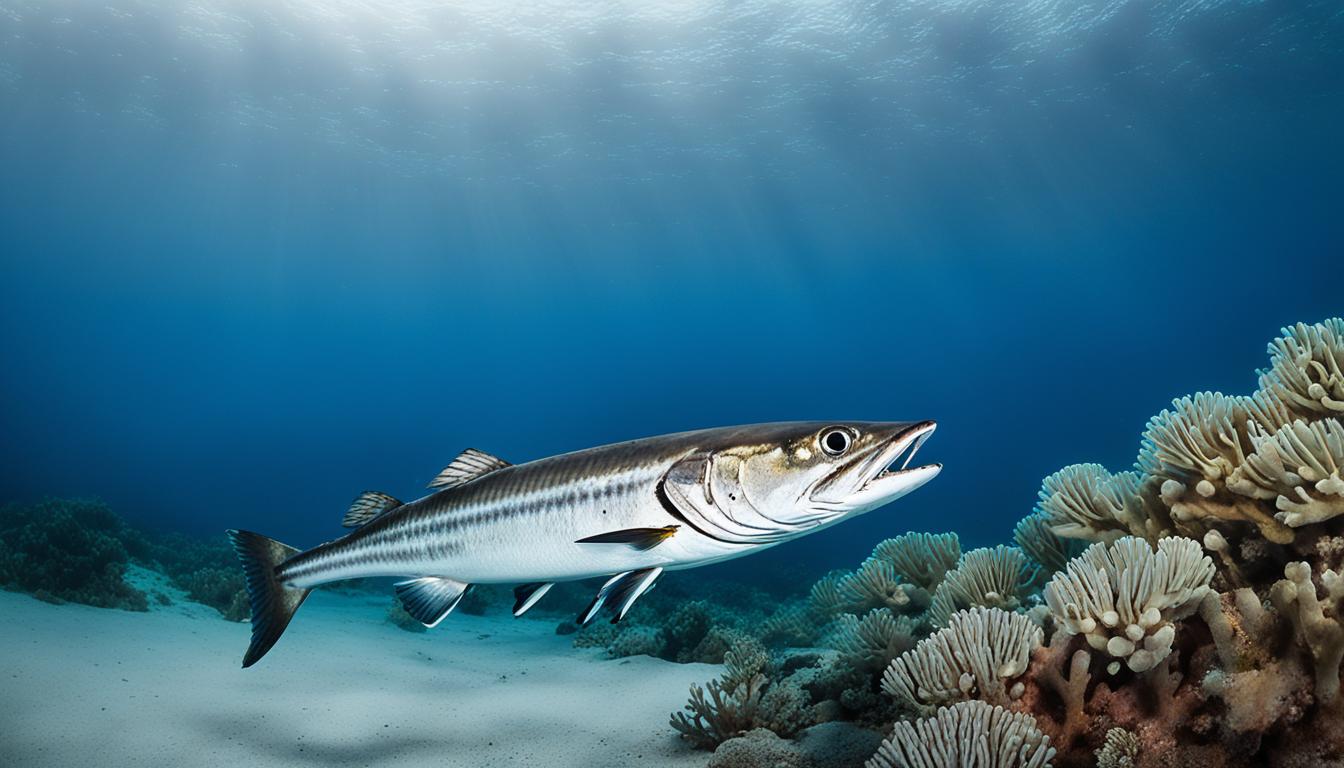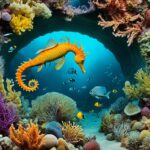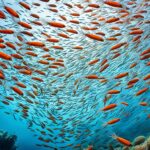Many people are asking if barracudas are endangered. The great barracuda is a big fish found in warm waters. It’s known for being a top predator. But, the International Union for Conservation of Nature (IUCN) doesn’t think they are endangered yet.
Still, you might be curious about their conservation status because their numbers are going down in some places. To figure out if barracudas are endangered, we need to look at where they live, how they act, and the dangers they face in the ocean.
Understanding Barracudas
The barracuda family includes many species, with the great barracuda being the most well-known. These fish have special traits that help them live in the ocean. By looking into the barracuda species overview, we see how diverse and adaptable these predators are.
Species Overview
Barracudas are fish that eat other animals and live in warm and hot places. They like to stay in coral reefs, mangroves, and open sea. There are over 20 types of barracudas, each with its own way of behaving and living in the ocean. The great barracuda is especially big and looks very striking.
Physical Characteristics
Each barracuda looks a bit different, but they often have long bodies and sharp teeth. The great barracuda can be over 6 feet long and weigh more than 100 pounds. It has a blue-gray top and a silver bottom, with dark spots and faint bars. This color helps it hide while it hunts.
| Species | Max Length (ft) | Weight (lbs) | Habitat |
|---|---|---|---|
| Great Barracuda | 6.5 | 100 | Tropical and subtropical waters |
| Pacific Barracuda | 5.5 | 50 | Pacific Ocean, nearshore areas |
| Spanish Barracuda | 4.5 | 30 | Western Atlantic waters |
Are Barracudas Endangered?
Understanding the barracuda conservation status helps us see the challenges they face. Barracudas are not yet endangered, according to the International Union for Conservation of Nature (IUCN). However, some populations are showing worrying signs.
In the Caribbean, the number of barracudas is going down. This has marine biologists and conservationists worried.
Current Conservation Status
The overall conservation status of barracudas is stable. But, there are signs of a decline in some areas. Overfishing is a big problem, harming their homes.
We need to work on conservation to keep them in the ocean. They play a key role as top predators.
Population Trends
There’s a big drop in barracuda numbers in many places. Habitat loss from coastal development and pollution are to blame. We must keep an eye on their numbers to protect them.
Threats to Barracuda Population
The barracuda population faces many challenges mainly from human actions. These threats show how complex it is for this species to survive.
Fishing and Human Activity
Fishing is a big risk for barracudas. Commercial and recreational fishing often targets them, leading to overfishing in some places. The high demand for their meat and their popularity as game fish makes their numbers decline.
With more fishing, the future of barracuda populations is at risk. We need stricter fishing rules and more responsible fishing to help them.
Environmental Issues
Environmental problems also affect barracuda populations. Pollution from land harms marine ecosystems, making it hard for marine life to survive. Coastal development destroys their homes. Climate change changes ocean temperatures and affects their food supply.
These changes mess with their eating habits and where they live, making it harder for them to survive.
Importance of Barracudas in Marine Ecosystems
Barracudas are key predators in their homes under the sea. They help keep the ocean’s balance, which is crucial for many marine creatures to thrive.
Predatory Role
Barracudas play a big part in controlling the numbers of smaller fish. They hunt and eat these fish, stopping them from taking over. This keeps the ocean’s ecosystem healthy and diverse.
Impact on Marine Biodiversity
The way barracudas eat affects the variety of life in the sea. With healthy barracuda numbers, different fish don’t get too crowded. If they did, it could harm the balance and hurt other sea creatures. This could make the ocean less healthy overall.

Barracuda Conservation Status
The conservation status of barracudas is important to understand. They are not endangered, but we need to keep an eye on their numbers. Conservation efforts are key to protecting these fish for the future.
International Union for Conservation of Nature (IUCN) Data
The IUCN has a lot of info on barracudas and where they live. They see threats like overfishing and damage to their homes. Even though they’re not endangered, some local groups are at risk. The IUCN keeps checking on them and suggests ways to help.
Conservation Efforts
Many groups are working to save barracudas. They focus on fishing in a way that doesn’t harm the ocean and making their homes better. They work together with:
- Scientists
- Conservationists
- Local communities
This teamwork is vital in solving the problems barracudas face. By teaching people and getting communities involved, they hope to lessen threats. This helps protect the ocean and its creatures.
Protective Measures for Barracudas
To protect barracudas, governments and conservation groups have taken action. They set fishing limits and close fishing areas at certain times. This helps barracudas recover and keeps the ocean’s balance.
Barracudas are important predators in the ocean. Without these rules, they could be overfished. This would harm the whole marine ecosystem.
Regulatory Actions
Rules are in place to protect barracudas from overfishing. They set a limit on how many barracudas can be caught. Fishing is also stopped during breeding times.
These steps help increase barracuda numbers and improve marine life overall. With these rules, the ocean becomes healthier for all living things.
Community Involvement
Getting people involved is key to protecting barracudas. Local groups work to teach people why barracudas are important. They also promote fishing that is good for the ocean.
Through education, people learn how fishing affects barracudas and their communities. This makes conservation a shared goal. It helps protect the ocean for everyone.
FAQ
Are barracudas considered endangered?
Barracudas are not yet listed as endangered by the International Union for Conservation of Nature (IUCN). But, some local groups are seeing their numbers go down, especially in the Caribbean.
What is the conservation status of barracudas?
People keep a close eye on the conservation status of barracudas. They are not seen as endangered. But, the fact that their numbers are dropping worries people about their future.
What are the major threats to barracuda populations?
Barracudas face big threats like overfishing from both fun and commercial fishing, losing their homes, pollution, and climate change’s impact on their food and homes.
Why are barracudas important in marine ecosystems?
Barracudas are key predators that help keep marine life in check by managing smaller fish. This keeps ecosystems balanced and supports a wide variety of life.
What conservation efforts are in place for barracudas?
To help barracudas, there are efforts like fishing in a way that’s good for the ocean, fixing their homes, and rules like fishing limits and closing areas to fishing during certain times.
How can communities get involved in barracuda conservation?
Communities can help by spreading the word, joining local projects, and fishing in ways that help both barracudas and local fishing.
What is the role of the IUCN regarding barracuda conservation?
The IUCN is key in watching over and giving updates on barracuda conservation. Their work helps make plans and spread the word about protecting these fish worldwide.







